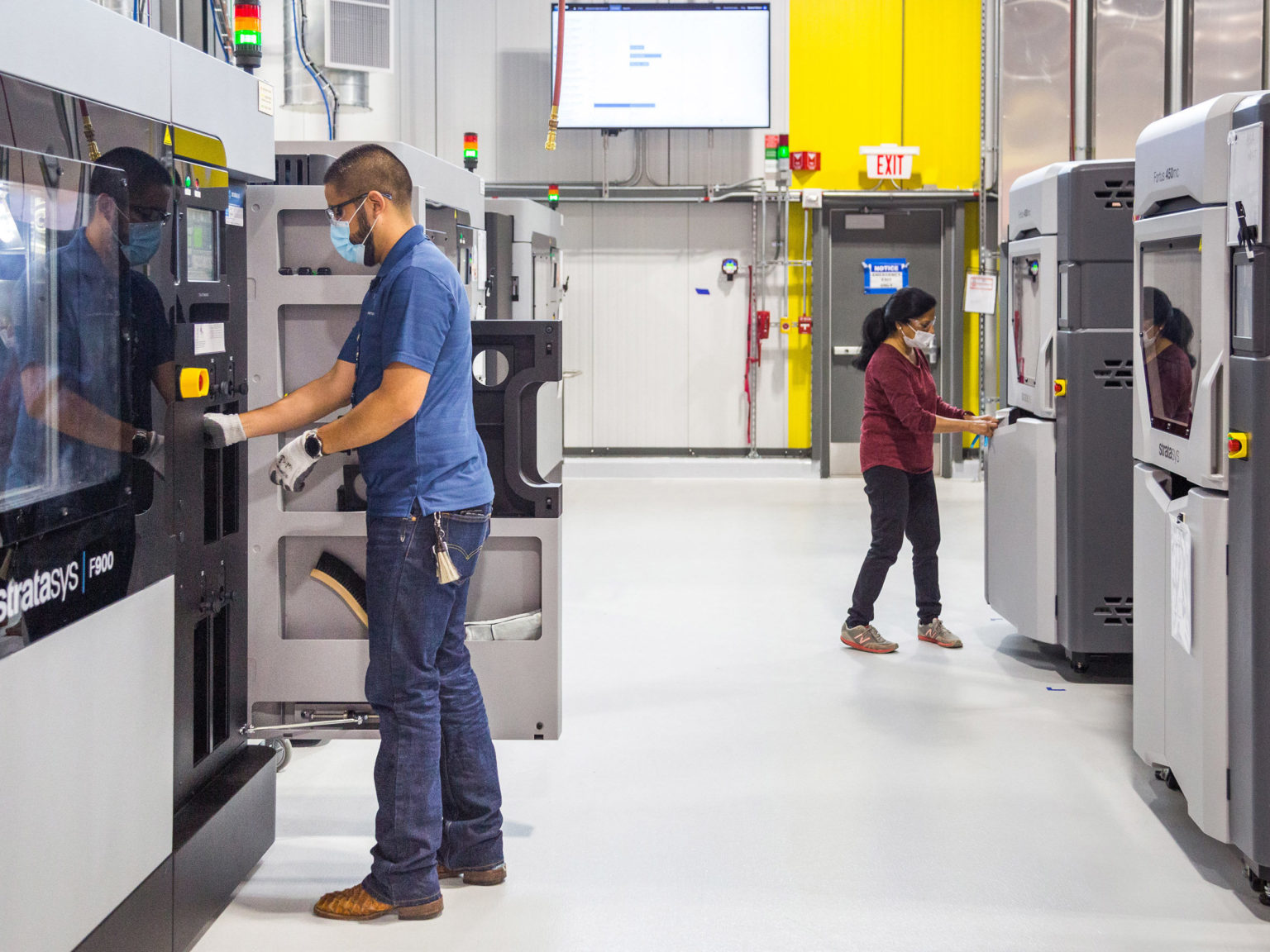Three-dimensional printing is taking on larger and larger roles at automakers worldwide. At General Motors (GM), the impact of the implantation of the technology has effected business operations from the building of the newest generation Corvette to the company’s pivot to creating supplies during the COVID-19 pandemic.
“3D printing helps us design and build parts and products faster and in ways we previously couldn’t,” said Kevin Quinn, GM director of additive design and manufacturing. “It’s already having a positive impact on how we develop and build vehicles, like Corvette, and it’s allowed us to apply our mass production expertise to medical supplies and devices.”
The company produced 3D printed “ear savers,” which help make masks more comfortable for some wearers.
Photo courtesy of General Motors
Years ago, when noted first physical version of what would become the C8 came together, 75 percent of its parts were 3D printed. GM says that this allowed its research and development teams to envision how the vehicle would come together and allowed them to diagnose and correct issues early on, leading to a reduced development time.
GM is working to implement the technology even further within its product development and production plans as the technology rapidly develops.
GM has a long history with using 3D printing in development. The company has been using additive manufacturing for rapid prototyping since 1989. Remember 1989? That was the year George H.W. Bush was sworn in as president, serial killer Ted Bundy was executed, Time Warner was created from a merger, and Tim Berners-Lee produced a proposal document for what would become the blueprint for the World Wide Web.
The company’s ability to do more 3D printing is due to a recent significant investment in the technology. The Additive Innovation Lab, a 4,000-square-foot facility, opened at the Cole Engineering Center inside GM’s Global Technical Center in Warren, Michigan last year. The lab’s location makes it accessible to engineers, designers, and other team members. To date, more than 700 employees have been trained by the facility’s combined salaried and hourly workforce.
“Most design work takes place in computer-aided design or computer-aided engineering these days, but there’s no substitute for having an actual part in hand to prove out your concept, be it a transmission component or a face shield visor,” said Quinn.
A second greenfield facility, the Additive Industrialization Center, will begin official operations in late 2020 onsite at GM’s Global Technical Center. GM says that the stand-alone facility will further expand the company’s expertise and capability in 3D printing and additive manufacturing.








